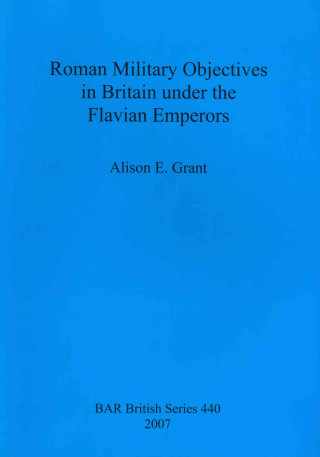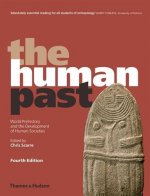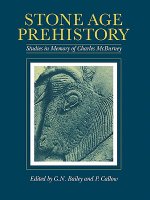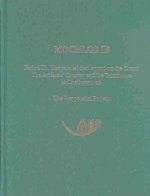
Kód: 12063260
Roman Military Objectives in Britain under the Flavian Emperors
Autor Alison E. Grant
Since archaeology is an ongoing process, archaeological discoveries must repeatedly be reassessed in terms of a constantly developing historical context. This study attempts to do that, and, particularly, to reconcile the up-to-da ... celý popis
- Jazyk:
 Angličtina
Angličtina - Vazba: Brožovaná
- Počet stran: 207
Nakladatelství: BAR Publishing, 2007
- Více informací o knize

Mohlo by se vám také líbit
-

University Park and South Denver
219 Kč -

Compendium of American Genealogy
2948 Kč -

Cultures of Violence
3313 Kč -

More Sex Is Safer Sex: The Unconventional Wisdom of Economics
407 Kč -

The Silver Linings Playbook
898 Kč -

Pink Cat Blue Cat
461 Kč -

Three Hearts and Three Lions
1608 Kč
Dárkový poukaz: Radost zaručena
- Darujte poukaz v libovolné hodnotě a my se postaráme o zbytek.
- Poukaz se vztahuje na celou naši nabídku.
- Elektronický poukaz vytisknete z e-mailu a můžete ihned darovat.
- Platnost poukazu je 12 měsíců od data vystavení.
Více informací o knize Roman Military Objectives in Britain under the Flavian Emperors
Nákupem získáte 242 bodů
 Anotace knihy
Anotace knihy
Since archaeology is an ongoing process, archaeological discoveries must repeatedly be reassessed in terms of a constantly developing historical context. This study attempts to do that, and, particularly, to reconcile the up-to-date archaeological record with existing documentary sources. The Prologue shows how traditional and contemporary approaches to the study of Roman military history in Britain have shaped accounts of the Flavian period (AD 69-96). It summarises fact and fiction regarding the achievements of Agricola's seven-year governorship (AD 77-83), and demonstrates how recent discoveries are now beginning to present a new picture of first-century campaigning in northern Britain. It also introduces the documentary sources, especially the place-names and tribal areas on 'Ptolemy's Map', the place-names in the British section of the Ravenna Cosmography, and the text of Tacitus' Life of Agricola, which are used to examine the military zone (north of a line roughly from Bristol to Lincoln). Part I deals with the political and geographical structure of Britain - as far as possible from the native standpoint. Chapter 2 presents and discusses identifications for each place-name in the Ravenna list and advocates an accurate, 'regional' distribution of names. Chapter 3 builds upon this, by using the place-names, together with the information from Ptolemy's map and other classical sources, to determine the tribal areas, which are vital for understanding the situation that the Romans encountered. Part II superimposes the historical narrative; it shows how Tacitus' account does indeed fit well with the geopolitical infrastructure of Britain, highlights the remarkably close correspondence between documentary sources and archaeological discoveries, and produces a greatly enhanced understanding of the Roman campaigns within northern Britain during the first century. However, the original Ravenna document was compiled no earlier than the second century, because it includes place-names associated with both Hadrian's Wall and the Antonine Wall. The Epilogue looks at the dating issue, suggests a date c.142-3, and shows how the place-names can be used to explain the reasons behind the reorganisation of northern Britain and the renewed advance into Scotland as far as the Tay, which took place in the early years of the reign of Antoninus Pius (AD 138-61).
 Parametry knihy
Parametry knihy
Zařazení knihy Knihy v angličtině Humanities Archaeology Archaeology by period / region
2424 Kč
- Plný název: Roman Military Objectives in Britain under the Flavian Emperors
- Autor: Alison E. Grant
- Jazyk:
 Angličtina
Angličtina - Vazba: Brožovaná
- Počet stran: 207
- EAN: 9781407301143
- ISBN: 1407301144
- ID: 12063260
- Nakladatelství: BAR Publishing
- Hmotnost: 726 g
- Rozměry: 297 × 210 × 13 mm
- Datum vydání: 15. August 2007
Oblíbené z jiného soudku
-

Lifeways of Hunter-Gatherers
859 Kč -

Lost Technologies of Ancient Egypt
493 Kč -

Magicians of the Gods
277 Kč -

Egyptian Hieroglyphs for Complete Beginners
357 Kč -

Horse, the Wheel, and Language
827 Kč -

War before Civilization
588 Kč -

Petra
222 Kč -

Cat in Ancient Egypt
303 Kč -

Complete Pompeii
543 Kč -

Human Past
1657 Kč -

Scenes from Prehistoric Life
678 Kč -

Across Atlantic Ice
1072 Kč -

Book of Enoch
812 Kč -

Timewalkers
488 Kč -

Creating the Human Past
1009 Kč -

Mesolithic Europe
3659 Kč -

Resurfacing the Submerged Past
1754 Kč -

Stone Age Prehistory
1257 Kč -

Lindow Man
385 Kč -

American Beginnings
2220 Kč -

Her Cup for Sweet Cacao
1668 Kč -

Against the Grain
473 Kč -

Dress Accessories, c. 1150- c. 1450
893 Kč -

Rise of Bronze Age Society
2032 Kč -

Lewis Chessmen: Unmasked
247 Kč -

Neanderthals Among Mammoths
4995 Kč -

Biblical Archaeology: A Very Short Introduction
250 Kč -

Bible Unearthed
427 Kč -

Seismosaurus
2763 Kč -

Treasures of the Valley of the Kings
725 Kč -

Divine Creatures
606 Kč -

Tutankhamun
811 Kč -

Hieroglyphics
739 Kč -

First Artists
543 Kč -

In Search of the Indo-Europeans
751 Kč -

Performance Power and the Art of the Aegean Bronze Age
1481 Kč -

Tasting the Past
674 Kč -

Classical Archaeology 2e
1079 Kč -

Upper Pleistocene Prehistory of Western Eurasia
2126 Kč -

Humans at the End of the Ice Age
5094 Kč -

Medieval European Coinage: Volume 14, South Italy, Sicily, Sardinia
2340 Kč -

Prehistory: A Very Short Introduction
250 Kč -

Mochlos IB
3082 Kč -

Salt in Prehistoric Europe
885 Kč -

Prehistoric Rock Art
855 Kč -

Medieval Household
1376 Kč -

Complete Cities of Ancient Egypt
764 Kč -

First Signs
374 Kč -

Mesolithic Europe
1779 Kč
Osobní odběr Praha, Brno a 12903 dalších
Copyright ©2008-24 nejlevnejsi-knihy.cz Všechna práva vyhrazenaSoukromíCookies



 Vrácení do měsíce
Vrácení do měsíce 571 999 099 (8-15.30h)
571 999 099 (8-15.30h)